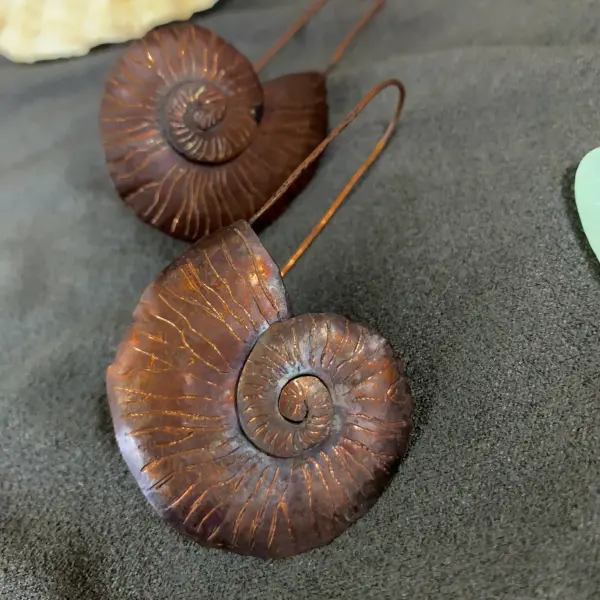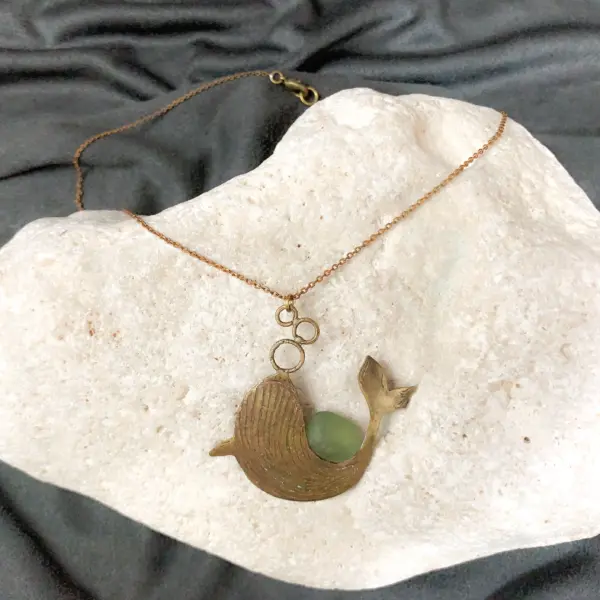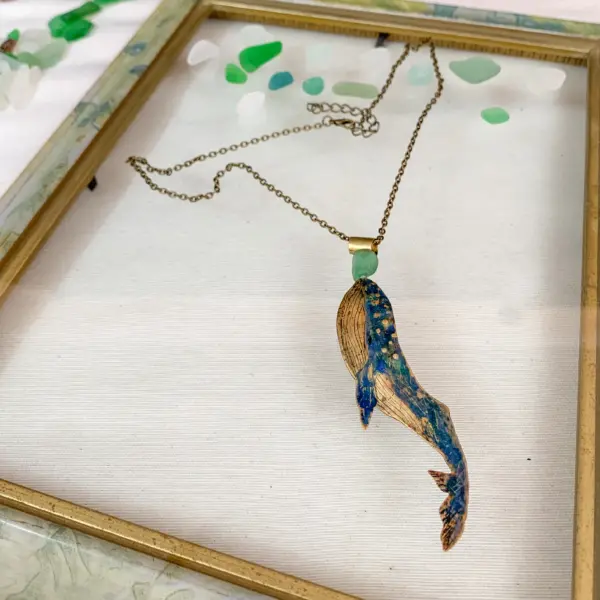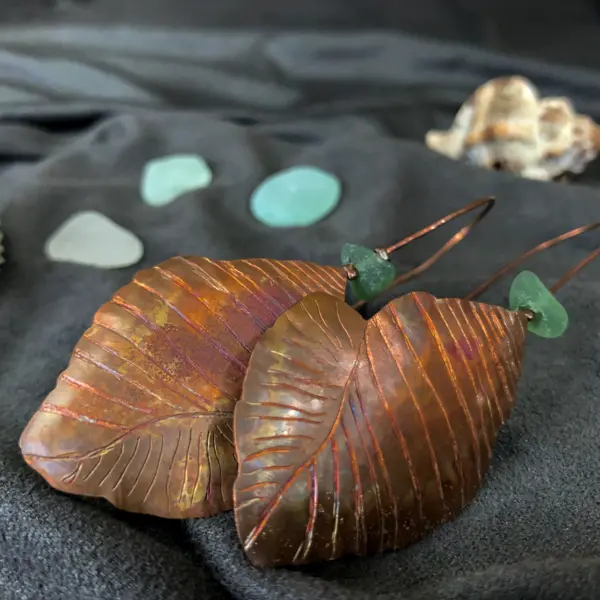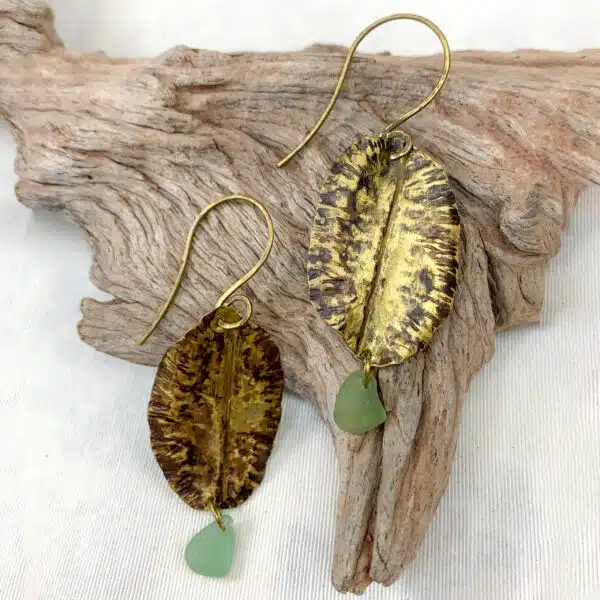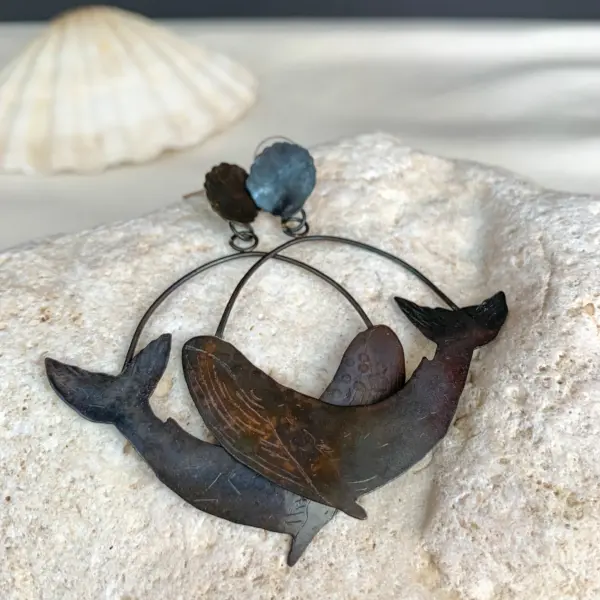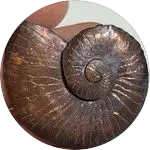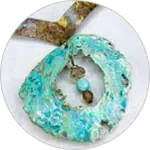Uniquely designed jewellery, made from prickly pear cactus, a plant that is well-known in the Mediterranean area. Each piece has a special organic structure and is prepared by hand; hence the result is an original one-of-a-kind artisan jewellery
Planning the design
I spend quite some time planning the perfect designs for our jewellery. We often go out for a walk or a dive with my husband to take Nature photos. Sometimes a bird or a flower we see on the fields instantly inspires me and I immediately visualise the finished piece of jewellery. I like to keep pieces of papers everywhere in our house and in my bags, so that I can make a sketch wherever a vision hits me. Some of my sketches are on hankies, when I couldn’t reach a decent piece of paper. But other times planning takes a little bit more time, so I need to scroll through a lot of Nature photos to find a shape I like. Then I make a drawing from the version I like from all the different photos I found. An important part of this is to figure out the perfect size and positioning for an earring or a pendant. Most of the time I prepare models first from cardboard, with different elements of the jewellery, so that we can play with them like with puzzle pieces, and actually try the different versions on to see how they look when worn as a jewellery. Then I choose the one I like the most, and then it’s time to go to the next step where even more fun awaits…
Hand Sawing, filing
Now I draw the shapes I chose on a plain brass or copper sheet, and then I start to cut the shape out with a jeweller’s hand saw. This hand saw has a very thin saw blade with tiny teeth. I need to choose the size according to the thickness of the metal sheet. These blades, being really thin, are thorn easily, so sawing an intricate, complex design needs some planning again, and extra focus. If you follow us on social media, I share videos about the different stages, so there you can see how sawing is actually done.
After a piece is completely cut out, I have to file all the edges to make them smooth. For this I use different shape files and then fine sandpapers.
Annealing
Annealing is again a fun part of working with metal. It is a heat treatment process, during which the hardness of the metal is reduced, to make it more workable. It requires a very high temperature, which is achieved with a gas blow torch. The metal has to be heated to at least 400C, so it needs to be done with some safety precautions. During the process of heating the colour of the metal changes quickly, and I need to be on the watch and look for the right shade to know that the metal is fully annealed. If I accidentally overheat it, then it easily reaches the melting point and the whole piece is ruined. After reaching the right softness, I hold the metal with insulated tweezers and dip it in water (quench) to cool it down. This cooling step does not harden these types of metals, just cools them down so that I can continue working with them.
Etching
During this phase I draw surface patterns to the piece with a special paint, then I place the metal in an acidic bath, so the acid can ‘eat up’ the bare parts. It usually takes several hours until the acid adequately removes the unwanted metal parts to achieve a depth on the surface. As a result, the metal surface will get the texture or pattern that the actual design requires.
Hammering, chasing
So far, although I have already worked a lot through all the previous steps on the metal piece, it’s still a flat piece. So in this stage I start to give it some three dimensional shape. There are a lot of different shapes that can be achieved with hammers, like curved and domed shapes in different sizes at different parts of the metal, indentions and textures.
Fold forming
This is an exciting method in metalsmithing. Fold-forming means that the metal sheet is folded (after reducing its hardness), the folded side hammered heavily, then (after annealing again and again) opening the folded metal and flattening to the required flatness. Folding gives it an interesting 3D shape, and this method can be used for example to make realistic metal leaf shapes.
Soldering
Soldering is one of the most satisfying stages of metalsmithing, and I think most metalsmiths would agree on that! This is the procedure when we join different metal parts together by applying high heat and a small piece of special solder metal of the same kind that the jewellery itself is made of. The heat is applied by jewellers’ gas blow torch, and this method requires very high precision, since in most cases the parts to join together are tiny. I often use magnifying lenses during the process so I can clearly see the tiniest changes in the metal colour and the flowing of the solder. Often it is just a few seconds between proper joining and total ruining of the piece I’m working on…
Polishing and patina
At this stage our piece is nearly ready: it has its proper shape, texture, patterns and hardness. Now it’s time to decide what colour form of the metal would suit the design best. There are a lot of options in this: I can leave the metal surface bare and dull, I can polish it to a high shine, I can give it a brushed look, I can darken it to different darkness, or I can create different colours of patina on the surface with simple and mild household chemicals. Creating patina is a really magical process, and very exciting to watch how the surface of the metal slowly changes its colour to white, pink, turquoise, cobalt or green. And the fun part is that no two patina processes give the same result! So the end result is always a surprise!
And finally here we are: after so many stages of the magical transformation we have our finished metalsmith jewellery piece in our hands! No matter how much jewellery I have made already, it’s always exciting to see how a new piece is taking shape.
FOLLOW US ON
Art of Nature | Contemporary Jewellery
@artofnaturejewellery






